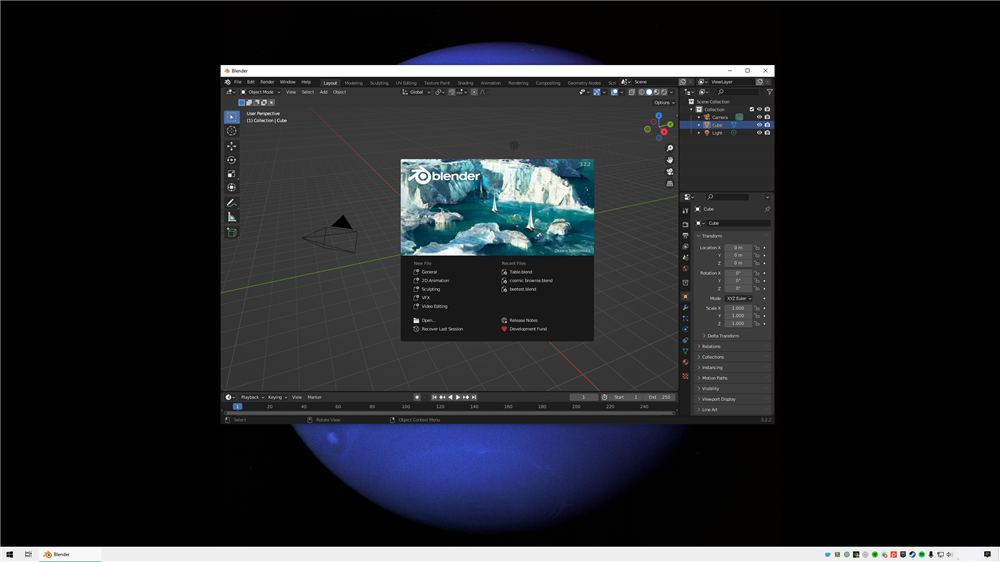
Mastering the Art of Effortlessly Switching Virtual Desktops on Windows 10

Effortlessly navigate between virtual desktops on Windows 10 using convenient keyboard shortcuts, taskbar options, and trackpad gestures for seamless multitasking
Key Takeaways
Easily switch between virtual desktops in Windows 10 using keyboard shortcuts like Windows+Ctrl+Left Arrow or Windows+Ctrl+Right Arrow.
To effortlessly navigate through virtual desktops, utilize the Windows+Tab shortcut and conveniently switch between them using the arrow keys and Enter key. Make sure to activate four-fingered touchpad gestures in the Windows 10 settings to easily swipe up for Task View, switch left or right between virtual desktops, and reveal the current desktop by swiping down.
Keyboard Shortcuts to Switch Desktops
Boost Your Productivity with Virtual DesktopsWindows 10 offers a convenient solution called virtual desktops for managing multiple workspaces efficiently. You can effortlessly switch between virtual desktops using various keyboard shortcuts, some of which are lesser-known. In this article, we will explore all these shortcuts in detail. So, let's dive in and master the art of multitasking with virtual desktops.
To effortlessly switch between various desktops in Windows 10 using a keyboard shortcut, simply press Windows+Ctrl+Left Arrow to navigate to a desktop with a lower number or Windows+Ctrl+Right Arrow to move to a desktop with a higher number. If you specify a direction with the arrow keys where a virtual desktop exists, the workspace will immediately switch to it.
To have a swift overview of the virtual desktops accessible to you, simply press Windows+Tab. Consequently, a screen named "Task View" will appear, exhibiting a comprehensive compilation of available virtual desktops along with their corresponding thumbnails.
To switch between virtual desktops on this screen using your keyboard, press Tab until one of the thumbnails in the top row is highlighted. Afterwards, navigate between them by pressing the arrow keys and then Enter. Task View will close, displaying the desktop you selected.
If you would like to create an additional virtual desktop using the keyboard, simply press Windows+Ctrl+D. Alternatively, press Windows+Tab to open Task View once more. Navigate through the options using the Tab and arrow keys, select "New Desktop," and confirm your selection by pressing Enter.
A new virtual desktop will appear. When you're done managing your desktops, select one and press Enter, or just hit Escape to return to your desktop.
Using the Taskbar to Switch Between Multiple Desktops
If you'd like to quickly switch between virtual desktops via the taskbar, click the Task View button, or press Windows+Tab.
Next, click or tap the desktop to which you want to switch.
If you don't see the Task View button on the taskbar, right-click the taskbar, and then click "Show Task View Button"; it should now have a checkmark next to it.
Once it's visible, you can click "Task View" at any time to manage your virtual desktops, which definitely comes in handy!
Trackpad Shortcuts to Switch Between Virtual Desktops
By default, Windows 10 dedicates certain touchpad gestures to switching between virtual desktops. To utilize these gestures, simply place all four fingers on your trackpad and swipe them in a specific direction. Here is their functionality:
Swipe upwards with four fingers: Opens Task View (equivalent to pressing Windows+Tab).
Four-fingered swipe left: Switch to a lower-numbered virtual desktop.
Four-fingered swipe right: Switch to a higher-numbered virtual desktop.
To display the current desktop, perform a downward swipe using four fingers.
If these gestures are not functioning, it is possible that they have been deactivated in the Settings. To enable them, click on the Windows button located on the taskbar, then select the Gear icon to access the "Settings" menu. From there, go to Devices > Touchpad. Scroll down until you locate the "Four-Fingered Gestures" options.
In the "Swipes" drop-down menu, select "Switch desktops and show desktop."
You can also assign these functions to three-fingered gestures on the Touchpad settings screen. Once done, close the Settings window to apply the changes. If your device has multi-touch trackpad gestures, you can then utilize these swipe gestures to manage virtual desktops.




















